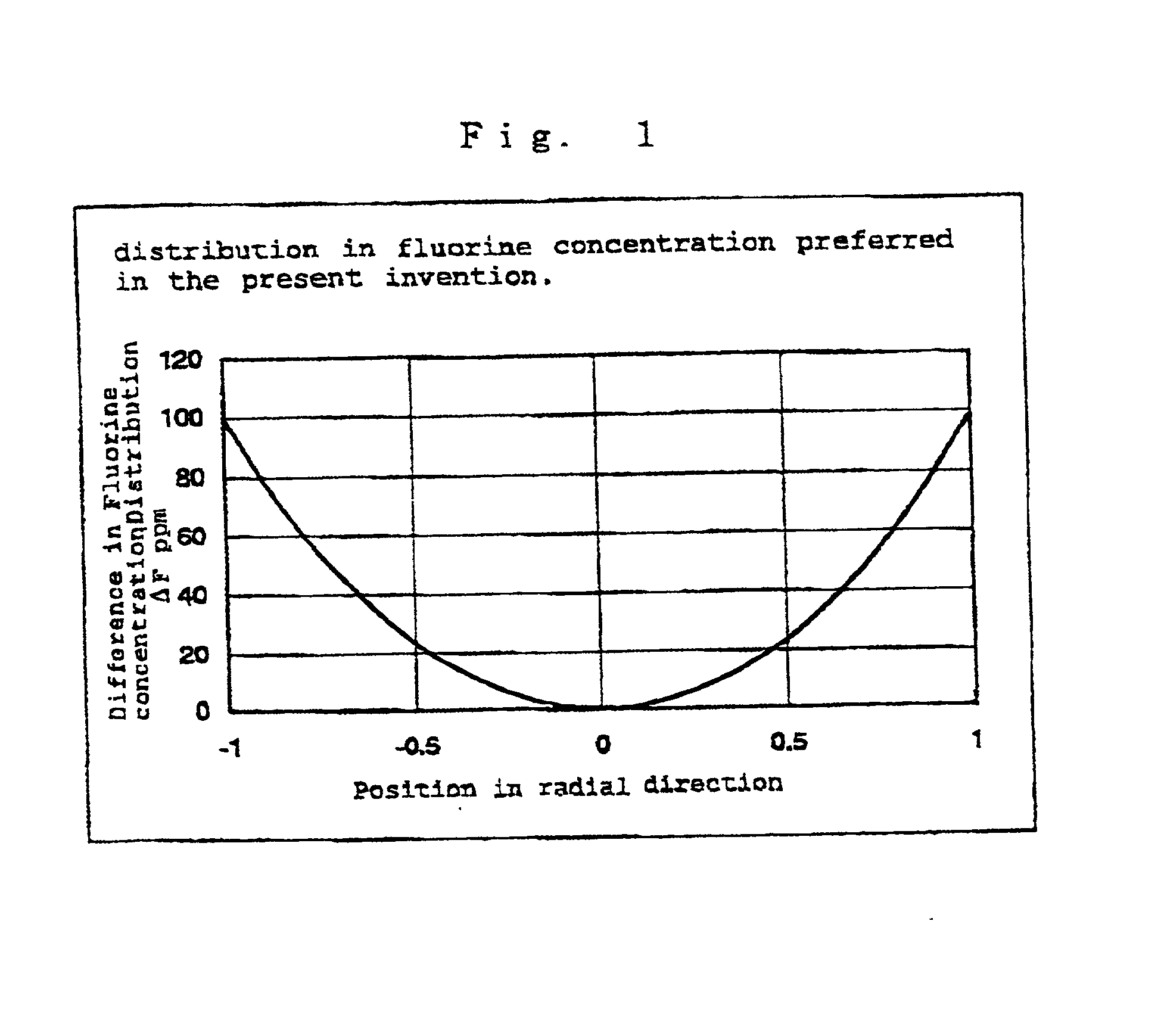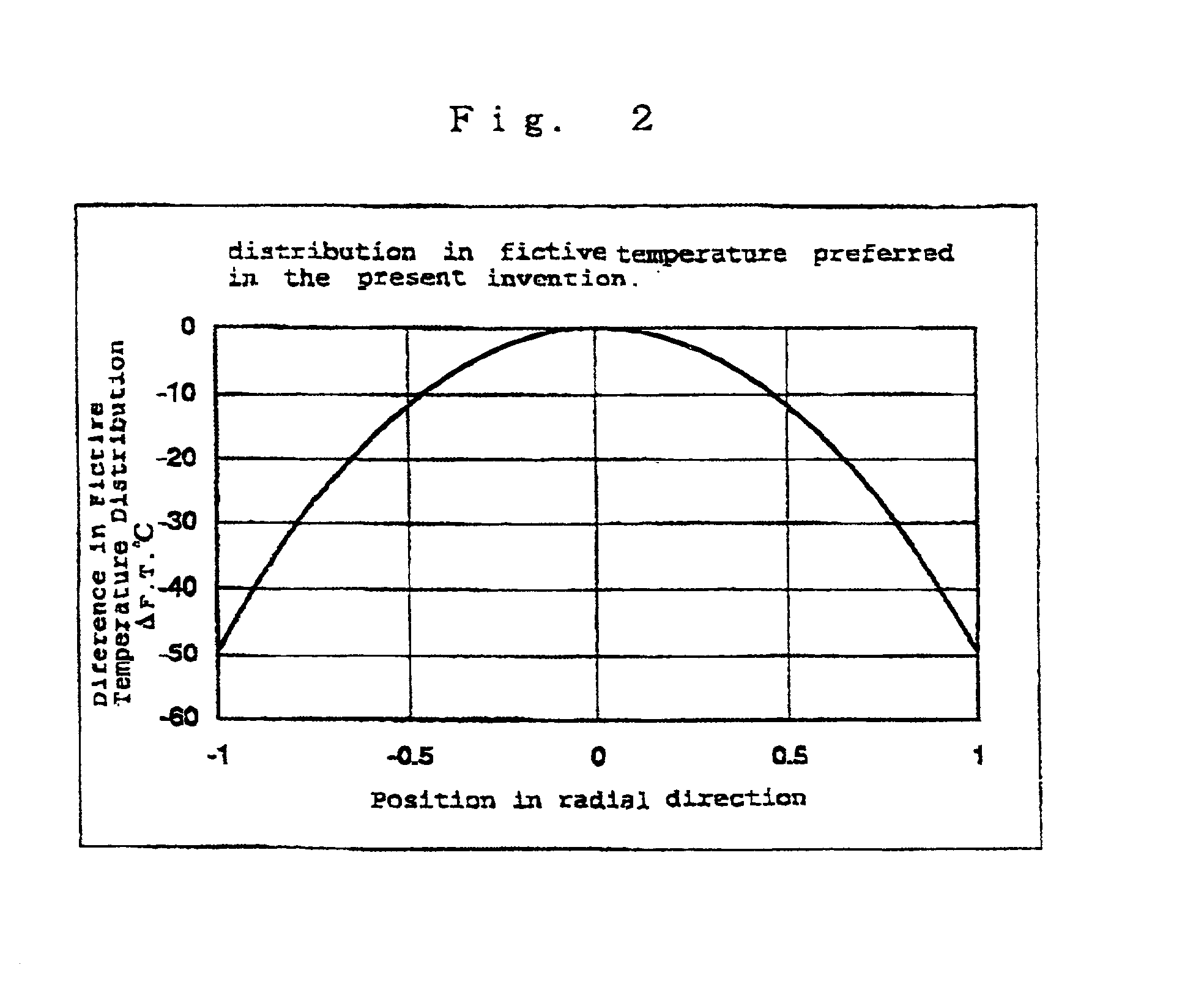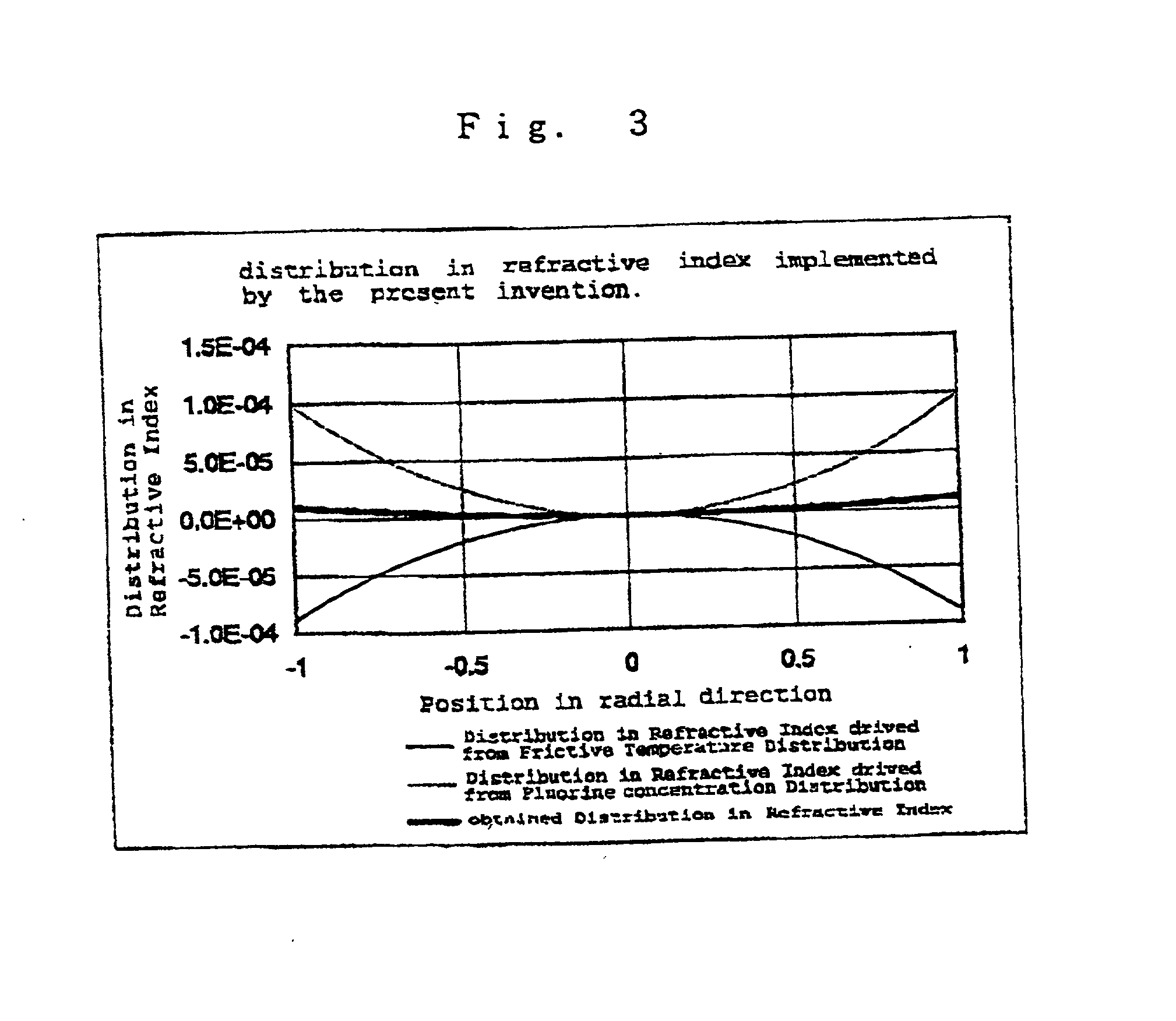Synthetic quartz glass optical material and optical member for f2 excimer lasers
a technology of synthetic quartz glass and excimer laser, which is applied in the direction of glass deposition burners, instruments, manufacturing tools, etc., can solve the problems of x-ray proximity ion lithography, unable to obtain a sufficiently high transmittance with synthetic quartz glass used conventionally for krf or arf excimer lasers, and a problem concerning the throughput of electron beam direct writing technology
- Summary
- Abstract
- Description
- Claims
- Application Information
AI Technical Summary
Benefits of technology
Problems solved by technology
Method used
Image
Examples
example 1
[0067] A high purity SiCl.sub.4 was hydrolyzed in an oxyhydrogen flame, and the fine silica particles generated thereby were deposited on a rotating base body to obtain a white-colored opaque soot body. The soot body thus obtained weighed 2 kg, and yielded a bulk density of 0.25 g / cm.sup.3. The resulting soot body was subjected to a heat treatment inside an electric furnace at 1000.degree. C. for a duration of 5 hours inside a mixed atmosphere of gaseous nitrogen and gaseous oxygen (mixing ratio by volume: N.sub.2 / O.sub.2=80 / 20) to control the density distribution.
[0068] Subsequently, the soot body was further subjected to a heat treatment for 10 hours under the same temperature condition, but by changing the atmosphere to that of a mixed gaseous SiF.sub.4 and He (mixing ratio by volume: SiF.sub.4 / He=3 / 97), and the resulting product was slowly passed through a furnace set to a maximum temperature of 1460.degree. C. under an atmosphere of mixed gaseous SiF.sub.4 and He (mixing ratio ...
example 2
[0073] A synthetic quartz glass ingot doped with fluorine was prepared under the conditions similar to those described in Example 1, and the resulting ingot was subjected to homogenization in a manner similar to that described in Example 1. The homogenized ingot was set inside a high purity graphite crucible, and was heated to 1800.degree. C to shape the quartz glass into a disk 150 mm in diameter and 50 mm in thickness by deformation utilizing its self-weight.
[0074] The thus obtained shaped body was placed inside a synthetic quartz glass vessel to prevent contamination due to impurities from occurring on the body, and the entire vessel was set inside an electric furnace. Then, after holding it at 1150.degree. C. for 20 hours under the atmospheric condition, the body was gradually cooled to 800.degree. C. at a cooling rate of 5.degree. C. / hr, at which temperature the current to the furnace was cut to allow the body to cool to room temperature as it is. Thus was obtained a shaped bod...
example 3
[0078] A synthetic quartz glass ingot doped with fluorine was prepared under the conditions similar to those described in Example 2, and after subjecting the resulting ingot to homogenization similarly, the resulting body was shaped into a disk 150 mm in diameter and 50 mm in thickness under the same conditions. The thus obtained shaped body was placed inside a synthetic quartz glass vessel, and the entire vessel was set inside an electric furnace. After holding it at 1150.degree. C. for 20 hours under the atmospheric condition, the body was gradually cooled to 960.degree. C. at a cooling rate of 1.degree. C. / hr, at which temperature the current to the furnace was cut to allow the body to cool to room temperature as it is. Thus was obtained a shaped body for Example 3.
PUM
| Property | Measurement | Unit |
|---|---|---|
| Fraction | aaaaa | aaaaa |
| Force | aaaaa | aaaaa |
| Angle | aaaaa | aaaaa |
Abstract
Description
Claims
Application Information
 Login to View More
Login to View More - R&D
- Intellectual Property
- Life Sciences
- Materials
- Tech Scout
- Unparalleled Data Quality
- Higher Quality Content
- 60% Fewer Hallucinations
Browse by: Latest US Patents, China's latest patents, Technical Efficacy Thesaurus, Application Domain, Technology Topic, Popular Technical Reports.
© 2025 PatSnap. All rights reserved.Legal|Privacy policy|Modern Slavery Act Transparency Statement|Sitemap|About US| Contact US: help@patsnap.com



